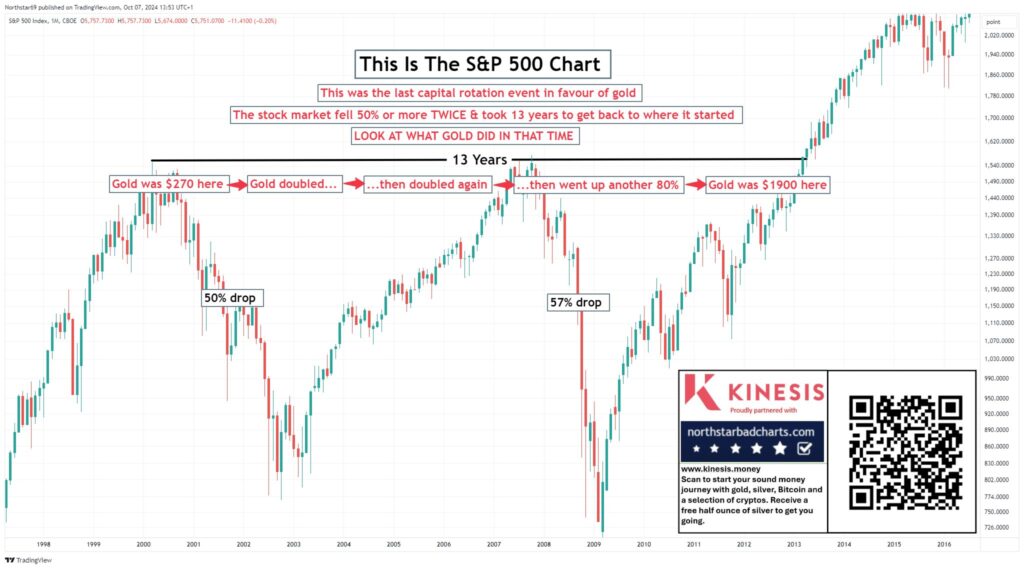A Look at the S&P 500’s Journey
The S&P 500 is a key index that shows the performance of large U.S. companies. From 1997 to 2016, the S&P 500 had quite a bumpy ride. It started at 750 points and went up to 1,500 before the dot-com bubble burst. This was a huge drop, cutting the index down by 50%. The market recovered between 2003 and 2008, but then the Global Financial Crisis (GFC) hit, causing another 57% drop. From there, it slowly started climbing again. During this time, the S&P 500 didn’t make much progress overall for more than a decade.

The Role of Gold During Market Stagnation
While the S&P 500 was experiencing these ups and downs, gold was steadily increasing. In the year 2000, the price of gold was around $270 per ounce. Over time, gold started rising and by 2011-2012, its price had skyrocketed to $1,900 per ounce. That’s an increase of almost eight times in just over a decade. This growth highlights the importance of gold, especially during periods when the stock market struggles to make gains. Gold acts as a hedge, providing stability when stocks are stagnant.
The Importance of Diversifying with Gold
The performance of gold compared to the S&P 500 shows why it’s important to have a diverse portfolio. If your investments are all in stocks and the market stalls, your portfolio could struggle for years. However, having some allocation to gold can keep your overall portfolio moving forward. Gold has shown that it can perform well even when stocks are not. It offers a way to maintain steady growth during tough times in the stock market.
Gold as a Hedge in Difficult Times
Gold’s steady rise during periods of stock market stagnation makes it an essential part of any long-term investment strategy. When the stock market is volatile or not performing well, gold often increases in value. This is why many investors turn to gold when there’s uncertainty in the market. It’s a reliable hedge that can protect your investments from downturns in other areas, providing balance to your overall portfolio.
Long-Term Portfolio Growth with Gold
While equities like those in the S&P 500 are important, they can have long periods of stagnation. Gold, on the other hand, has proven to increase in value over time, especially during periods of market uncertainty. Having a reasonable amount of gold in your portfolio ensures that you don’t rely solely on the stock market for growth. Gold’s performance, as shown over the past decade, can help keep your portfolio moving even when stocks are not.
Disclaimers and disclosures : https://tinyurl.com/2763eyaz
If you have any questions, please write to support@weekendinvesting.com













